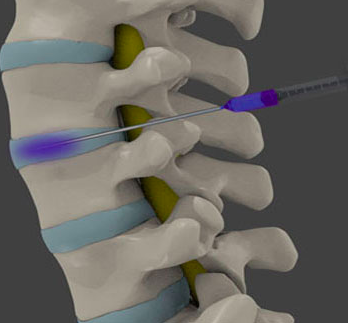Article reviewed and approved by Dr. Ibtissama Boukas, physician specializing in family medicine
What is nucleolysis? This article explains everything you need to know about this treatment used as an alternative to surgery for herniated discs.
Definition
Nucleolysis is a non-surgical and minimally invasive procedure used in the treatment of herniated disc and other discopathies. This is an alternative to operations typically used in dealing with disk problems (such as laminectomies ou arthrodesis).
Learn all about herniated disc, see the following article.
Before carrying out nucleolysis, it is necessary to identify the problematic intervertebral disc, and to ensure that it is indeed responsible for the patient's symptoms. Indeed, back pain is complex and multi-factorial, and it happens that a herniated disc is not necessarily the main source of the pain felt.
To do this, a clinical examination associated with medical imaging tests (such as a IRM, un scanner or other) will clarify the diagnosis, and ensure that the patient is a good candidate for nucleolysis.
Are there any risks with nucleolysis?
Nucleolysis has a fairly high success rate (between 70 and 88%), and has the advantage of being non-invasive. It also causes fewer side effects than standard surgeries used to treat herniated discs.
Out of 200 cases of nucleolysis performed in various European countries, no serious complications (threatening the life of the patient) were observed.
Cases of infection following nucleolysis are rare, but possible. They are usually treated with antibiotics. Allergies are also possible, especially if papain is used.
Nucleolysis is generally contraindicated in pregnant women, or on a disc that has already been operated on in the past.
Procedure
Essentially, it is a method of destroying the intervertebral disc when it is thought to be responsible for the patient's symptoms (back pain, sciatica and others).
The intervention lasts about 20 minutes, and is done under local anesthesia in an x-ray room. The mixture is injected under radiological guidance through the skin while the patient is lying on his side.
Nucleolysis typically uses chymodiactin, an enzyme extracted from papaya fruit. This mixture releases an active oxygen atom which binds to the gelatinous nucleus of the intervertebral disc. This causes destruction of the disc, and decompression of the compressed nerve roots (and potentially responsible for the patient's symptoms).

